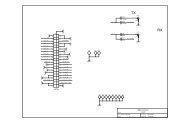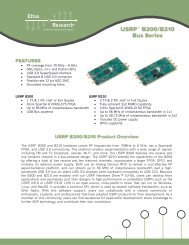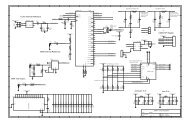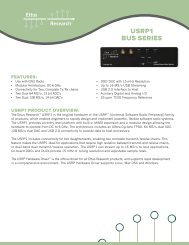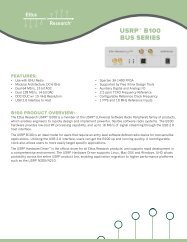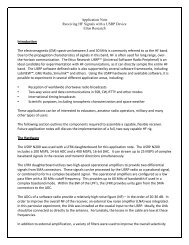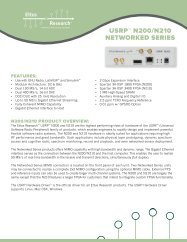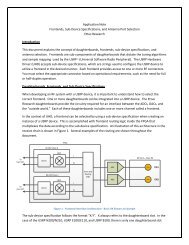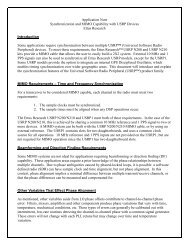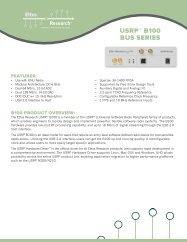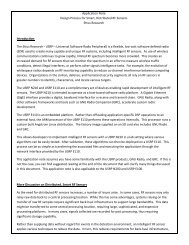Application Note Integration of a Low Noise ... - Ettus Research
Application Note Integration of a Low Noise ... - Ettus Research
Application Note Integration of a Low Noise ... - Ettus Research
You also want an ePaper? Increase the reach of your titles
YUMPU automatically turns print PDFs into web optimized ePapers that Google loves.
Min Freq<br />
(MHz)<br />
Max<br />
Freq<br />
(MHz)<br />
Ant.<br />
Gain<br />
(dB)<br />
LNA<br />
Gain<br />
(dB)<br />
LNA NF<br />
(dB)<br />
LNA<br />
IIP3<br />
(dBm)<br />
Currrent<br />
(mA)<br />
Voltage<br />
(V)<br />
UC-4364-513 435 438 18 No Spec 1 14 50 5-15<br />
UL-1501- 100 3000 15 12 1.8 33 125 5-15<br />
B384<br />
UC-1574-341 1565 1585 17 No Spec 1.9 24 100 5.5-18<br />
Table 2- Active Antennas<br />
Powering an External LNA or Active Antenna<br />
There are two general methods used to provide power to an external LNA; coaxially or with an<br />
independent power connection. The method required will depend on the selected LNA,<br />
daughterboard and power requirements.<br />
Many LNAs and active antennas require power to be applied to the conductor <strong>of</strong> the coaxial cable,<br />
which also acts as the path for the RF signal. This requires some method to isolate the receiver input<br />
from the DC component, which usually requires AC coupling via a capacitor, or a Bias-T. The<br />
functional model for a Bias-T is shown in Figure 1.<br />
Figure 1-Schematic Representation <strong>of</strong> Bias-T



